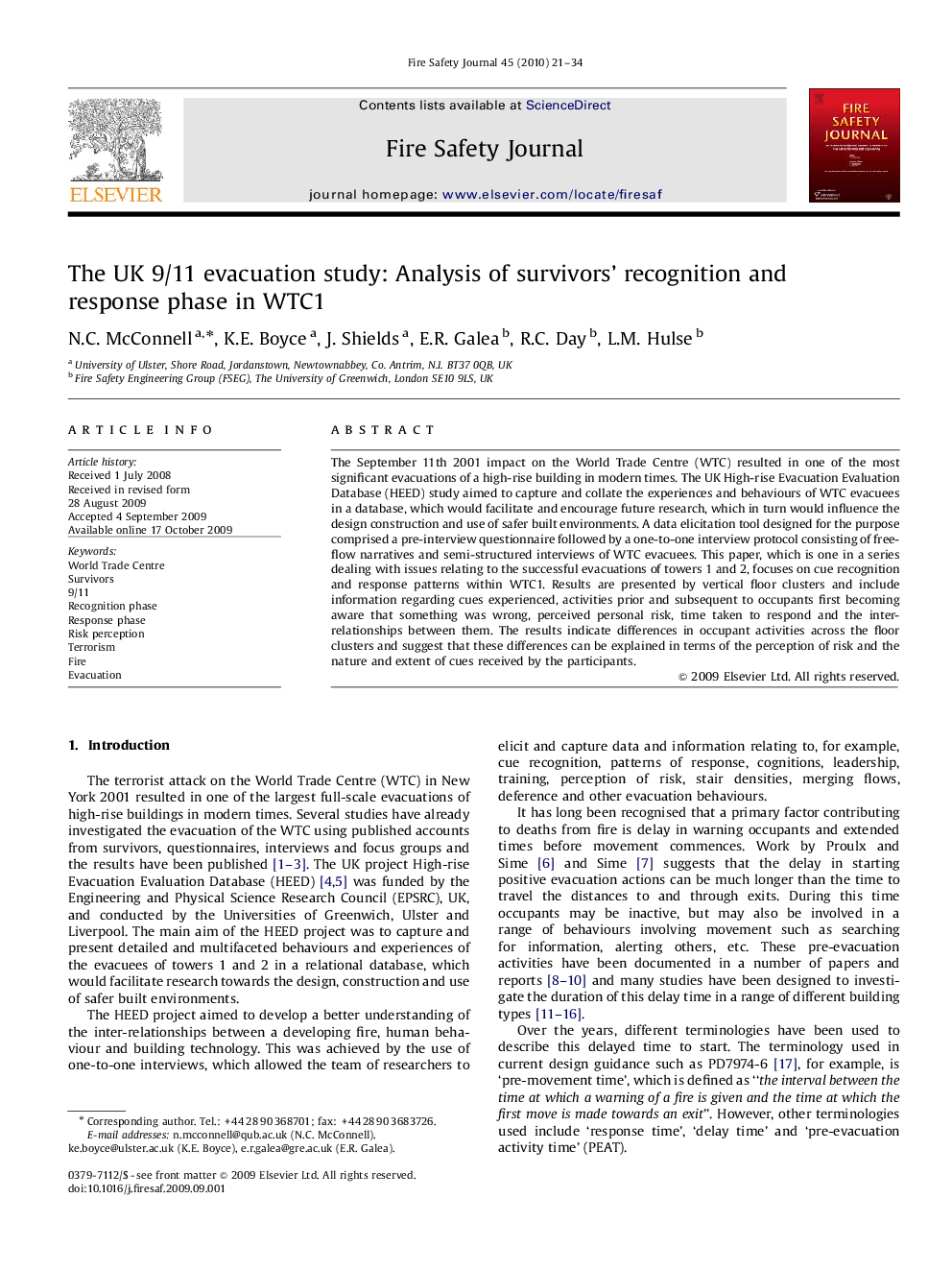| Article ID | Journal | Published Year | Pages | File Type |
|---|---|---|---|---|
| 270407 | Fire Safety Journal | 2010 | 14 Pages |
The September 11th 2001 impact on the World Trade Centre (WTC) resulted in one of the most significant evacuations of a high-rise building in modern times. The UK High-rise Evacuation Evaluation Database (HEED) study aimed to capture and collate the experiences and behaviours of WTC evacuees in a database, which would facilitate and encourage future research, which in turn would influence the design construction and use of safer built environments. A data elicitation tool designed for the purpose comprised a pre-interview questionnaire followed by a one-to-one interview protocol consisting of free-flow narratives and semi-structured interviews of WTC evacuees. This paper, which is one in a series dealing with issues relating to the successful evacuations of towers 1 and 2, focuses on cue recognition and response patterns within WTC1. Results are presented by vertical floor clusters and include information regarding cues experienced, activities prior and subsequent to occupants first becoming aware that something was wrong, perceived personal risk, time taken to respond and the inter-relationships between them. The results indicate differences in occupant activities across the floor clusters and suggest that these differences can be explained in terms of the perception of risk and the nature and extent of cues received by the participants.
